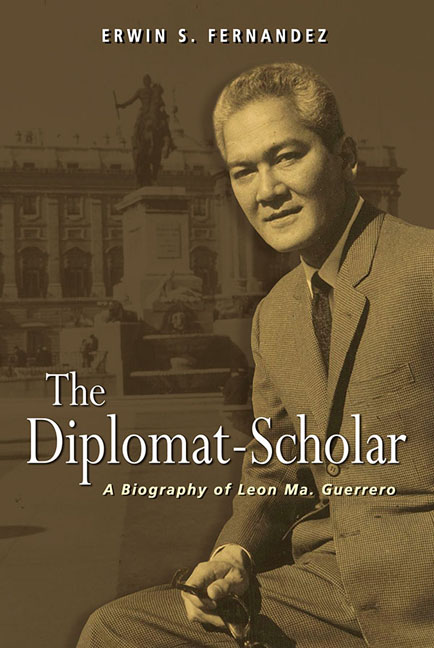Book contents
- Frontmatter
- Dedication
- Contents
- Preface
- Prologue
- Chronology
- I Ermita and Santa Cruz to Intramuros: Between Literary and Legal Career
- II To Tokyo and Back: The Making of a Diplomat
- III Going In, then Out of the Political Jungle: Padre Burgos to Arlegui
- IV London and Madrid: The Philippines in a Resurgent Asia
- V New Delhi to Belgrade: The Philippines towards Non-Alignment
- Epilogue
- Glossary
- List of Abbreviations
- Bibliography
- Index
- About the Author
- Frontmatter
- Dedication
- Contents
- Preface
- Prologue
- Chronology
- I Ermita and Santa Cruz to Intramuros: Between Literary and Legal Career
- II To Tokyo and Back: The Making of a Diplomat
- III Going In, then Out of the Political Jungle: Padre Burgos to Arlegui
- IV London and Madrid: The Philippines in a Resurgent Asia
- V New Delhi to Belgrade: The Philippines towards Non-Alignment
- Epilogue
- Glossary
- List of Abbreviations
- Bibliography
- Index
- About the Author
Summary
On the morning of 19 June 1982, President Ferdinand E. Marcos awarded the Gawad Mabini, the highest decoration in the Foreign Service, to a shrunken man on his deathbed. The day was special for an avid Rizalist. That barong-clad man who once displayed his brilliance and audacity was Leon Ma. Guerrero III. He was far from his old self, the tall dashing man who had exchanged barbs with foreigners in defence of the Filipino. In that hospital room, close family, a few friends and himself listened to Prime Minister Cesar Virata declare that he had “helped set the tone of Philippine foreign policy” and that “many of his beliefs have become part of the parcel of the foreign policy of the Republic….”
Being a writer was the other side of Guerrero. Shortly after his death, one author published an intriguing article on what he called “the great switcheroo of eighty-two”, finding the National Artist for Literature award to Carlos P. Romulo unmerited and that Guerrero deserved it more than Romulo because of his lasting contributions to Philippine literature. To him, “the better writer got the award for diplomacy and the better diplomat got the award for writing”, unaware that Romulo got his Gawad Mabini ahead of Guerrero.
As a diplomat, how did Guerrero influence the template of Philippine foreign policy? What were those beliefs he held that became one of the features of Philippine foreign policy in the 1970s and 1980s? In any case, as a writer, how did Guerrero contribute to Philippine letters that he is said to deserve the highest honour in Philippine arts and what were these contributions?
Examining the life of a historical figure requires placing him in the context of his times. Acting not only on his own volition, he responds to the forces about him and the limitations of the environment where he lives. Leon Ma. Guerrero III, the subject of this biography, distinguished himself as a writer and as a diplomat. To understand him demands an examination of Philippine, particularly elite Hispanic Tagalog society and culture during the twentieth century. In addition, we must take into account the circumstances in which he finds himself in literature and in diplomacy.
- Type
- Chapter
- Information
- The Diplomat-ScholarA Biography of Leon Ma. Guerrero, pp. 1 - 10Publisher: ISEAS–Yusof Ishak InstitutePrint publication year: 2017

